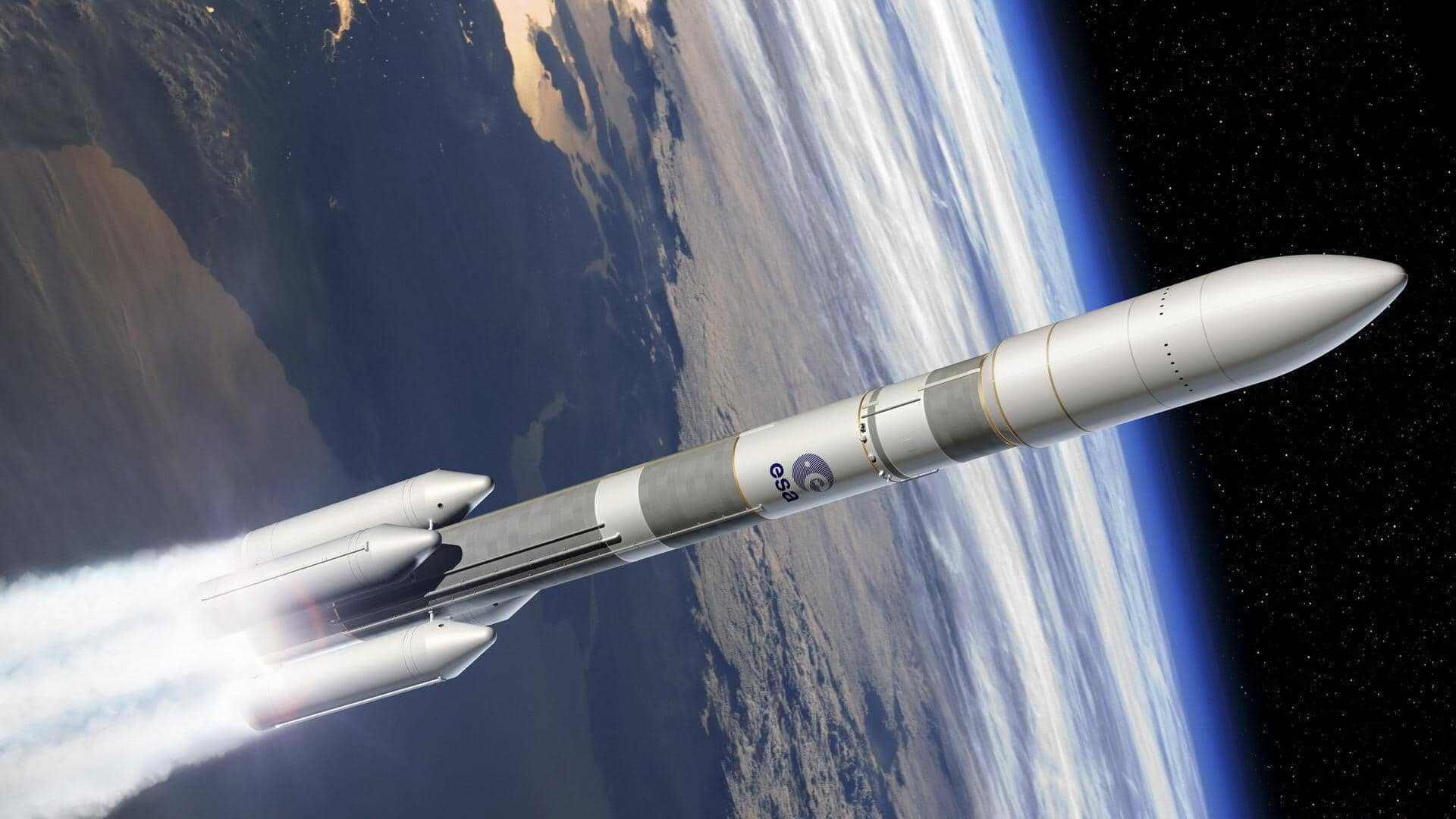
Key facts about ESA's Ariane 6 rocket
What's the story
The European Space Agency's latest heavy-lift rocket, Ariane 6, is getting ready for its first launch in 2024.
It is set to replace the retired Ariane 5 rocket, which had a 27-year run and over 100 successful launches.
The Ariane 6 is expected to be 44% less expensive than the former workhorse at an estimated transport cost of $4.7 per kilogram.
The rocket successfully completed a vital engine burn on Thursday, keeping it right on track for debut next year.
Details
Ariane 6: Europe's next-generation heavy-lifter
The Ariane 6 rocket has a core stage powered by a single Vulcain 2.1 engine and an upper stage with a smaller Vinci engine. It can also be equipped with two or four solid rocket boosters for extra liftoff thrust.
Initially planned to debut in 2020, the Ariane 6 has experienced several delays, caused by technical problems, the COVID-19 pandemic, and design changes.
Capacity
The rocket will be available in two variants
Ariane 6 will launch both heavy and light payloads for applications like Earth observation, telecommunication, and meteorology.
It will be available in two versions: Ariane 62 with two strap-on boosters and Ariane 64 with four.
The 64 variant can ferry payloads of roughly 11,500kg into geostationary transfer orbit (GTO) and 20,600kg into low Earth orbit (LEO). The 62 model can take 4,500kg into GTO and 10,300kg into LEO.
Comparatively, Ariane 5 could ship 20,000kg to LEO, rivaling SpaceX's Falcon 9.
Capabilities
Smaller satellites can launch as a 'rideshare'
Ariane 6 will weigh almost 9,00,000kg when launched with a full payload, which will equal about one and a half Airbus A380 passenger airplanes.
With the help of payload carriers, the rocket will allow small satellites, lighter than 200kg, to share a 'piggyback' ride on the main mission.
Offering rideshare services for small satellites "will provide cost-effective launch opportunities for small companies wanting to access the growing space industry," said ESA.
Cost
Ariane 6's engine has been modified to cut costs
Per ESA, Ariane 6's new engine, called Vulcain 2.1, has a "simplified and cheaper design."
The new technology in the "engine nozzle and ignition system has been moved from the engine to the launchpad structure, to make the stage perform better and cost less."
Currently, SpaceX launches are cheaper with Falcon Heavy costing $1.6/kg and Falcon 9 at $2.7/kg. This is largely due to reusable components.
Plans
Recent test flight was a full-scale launch rehearsal
On November 23, Ariane 6 rocket performed a full-scale launch rehearsal, ending with a seven-minute firing of its Vulcain 2.1 engine.
However, it was on September 5 that Ariane 6's main engine was ignited for the first time, lasting just four seconds.
Another hot-fire test is planned before the rocket's first flight. The upper-stage Vinci engine will be tested next month at Germany's Lampoldshausen test center, part of the country's space agency (DLR).